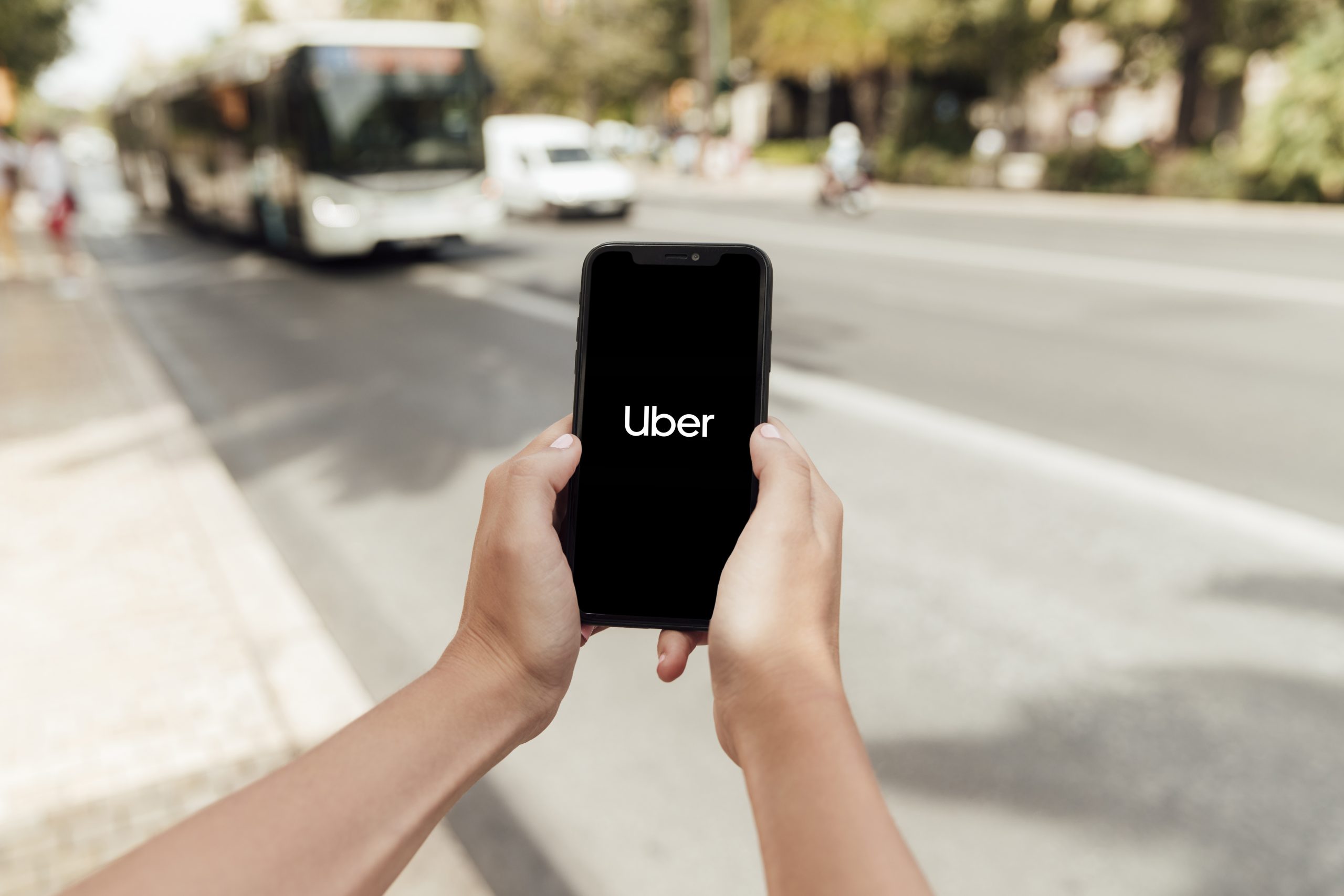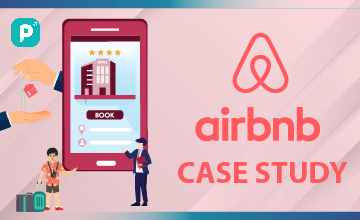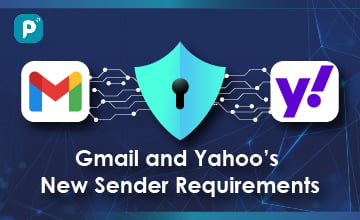Uber, the global leader in ride-hailing, is a universally recognized brand. We all know it as the platform that seamlessly links passengers with drivers for convenient transportation. However, what often escapes notice is that beneath the surface, Uber is more than just a transportation facilitator; it’s a formidable force in data and analytics. On a daily basis, countless riders engage with the Uber app, unwittingly feeding into a sophisticated network of data-powered insights and choices.

Uber stands as a dominant force in the transportation and delivery industry, boasting operations in over 72 countries and catering to more than 110 million active monthly users.
The remarkable triumph of Uber has spurred numerous entrepreneurs to venture into the realm of ride-hailing and delivery services. Let us get familiarized with Uber’s marketing strategies through this guide.
Revenue Model & Pricing Strategy
Uber makes money in a few different ways. Its a commission based system, where it takes a percentage of the total fare. There are various elements of its revenue model.
First, they take a part of the money you pay for your ride. This is called a commission, and it’s usually about 20-30% of the total cost. Sometimes, when a lot of people need rides, Uber might charge a bit more. This is called surge pricing. It helps encourage more drivers to be available when it’s really busy, and Uber makes extra money from it.
They also have other fees, like a booking fee or an airport fee. These are extra charges for specific situations. Some people pay a subscription fee for a service called Uber Pass. It gives them discounts on rides and other perks, and Uber makes money from these subscriptions.
Uber does more than just rides. They also deliver food (Uber Eats) and help ship goods (Uber Freight). They make money from fees they charge restaurants, riders, and other partners for these services. Businesses can pay Uber to advertise on their app, which brings in more money.
So, in short, Uber mainly makes money by taking a piece of the fare from each ride. They also have other ways of earning, like subscriptions, fees, and advertising. They’ve expanded into different services to bring in even more money.
Navigating Marketing Strategies
Uber, a trailblazer in the ride-sharing industry, owes much of its success to a well-crafted marketing strategy.
Customer at the Center Stage
A cornerstone of Uber’s strategy is its unwavering focus on the user. The company places a premium on delivering a seamless, hassle-free experience. This commitment is evident in their user-friendly mobile app and straightforward booking process. By prioritizing customer satisfaction, Uber has built a loyal and trusting customer base.
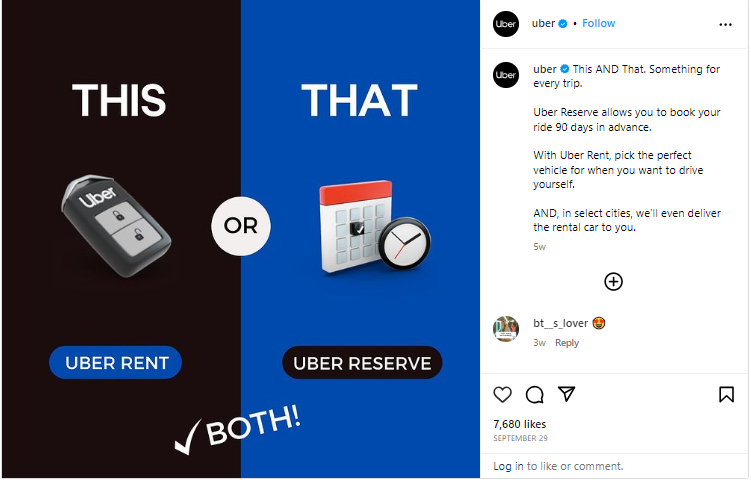
Dynamic Pricing Feature
Another standout tactic is Uber’s dynamic pricing, known as surge pricing. This strategy, allows Uber to adjust fares based on demand and supply. While it can be a topic of debate, surge pricing effectively balances ride availability during peak times, ensuring a reliable service.
Referral Program: A Win For All
Uber’s referral program is a brilliant move in customer acquisition. By encouraging existing users to refer friends and family, the company taps into the power of word-of-mouth marketing. This not only brings in new customers but also fosters a sense of community and trust among users. Incentives like discounts on future rides create a win-win situation, driving platform growth.
Data-Driven Approach
Data is a powerful ally for Uber. The company leverages analytics to gain insights into customer behavior and preferences. This data-driven approach informs decisions on pricing, routes, and service expansion, keeping Uber attuned to evolving customer needs.
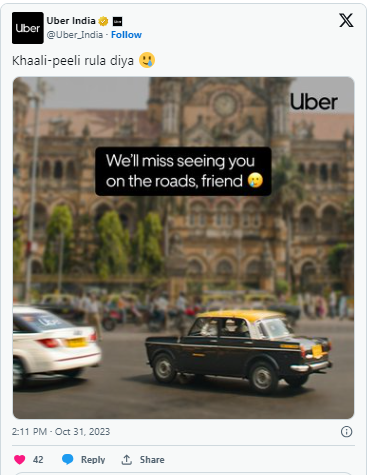
Enhancing Experience
In addition to customer-focused strategies, Uber places significant emphasis on driver satisfaction. Recognizing drivers as integral to the service, Uber implements initiatives to enhance their experience. Offering flexible earning opportunities, access to support, and performance incentives are among the ways Uber keeps its driver base motivated and engaged.
Multichannel Marketing
Uber’s marketing efforts span various channels. The company invests heavily in digital marketing, utilizing social media, email campaigns, and targeted ads to engage with users. This multi-channel approach ensures Uber maintains a strong online presence and remains top-of-mind.
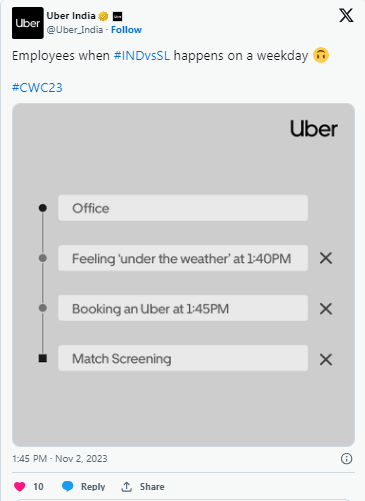
In summary, Uber’s success hinges on its dedication to user satisfaction, data-informed decision-making, and a comprehensive approach to the ride-sharing ecosystem. By focusing on user experience, implementing dynamic pricing, leveraging referral programs, and using data analytics, Uber has established itself as a dominant force in global transportation.
Additionally, the company’s attention to driver satisfaction and robust digital marketing efforts further contribute to its triumph.
Brand Building & Customer Loyalty
A key element of Uber’s success lies in its strategic use of social media platforms like Instagram, Facebook, and YouTube to connect with a diverse user base, including passengers, drivers, food enthusiasts, and partners. This concerted effort is central to building a strong brand identity and fostering lasting customer loyalty.
Through engaging content on platforms like YouTube, Uber shares driver stories, customer feedback, road safety tips, and updates on initiatives. This content not only informs and educates but also reinforces the brand’s commitment to safety, innovation, and community.
Uber excels at customer service on social media, promptly addressing feedback, suggestions, and concerns. With a dedicated customer service account, the company builds trust and reliability among its users.
Campaigns like the #WhyIRide initiative in 2016, encouraging users to share their motivations for choosing Uber on social media, have been highly successful in generating organic word-of-mouth marketing and user-generated content. This has significantly increased brand awareness and customer engagement.
Uber also strategically partners with influential figures, celebrities, and organizations that align with its values. Notable collaborations, like pledging to create one million job opportunities for women as drivers in partnership with UN Women in 2015, underscore the brand’s commitment to inclusivity and empowerment, garnering widespread recognition and praise.
Challenges and Future Prospects
Uber serves as a pivotal platform connecting drivers and passengers across cities globally. The company’s forward trajectory appears promising, owing to its astute consideration of critical factors such as regulatory dynamics, fierce competition in the transportation and delivery sector, ongoing innovation in products and services, and unwavering commitment to customer satisfaction.
This success has piqued the interest of entrepreneurs, leading to an uptick in the development of Uber-like clone apps for taxis and delivery services, potentially expanding to incorporate various modes of transportation like bikes, motorbikes, trains, scooters, buses, and even futuristic prospects like flying taxis. However, adherence to local laws and regulations is paramount in implementing Uber’s marketing strategies, as stringent rules governing safety, labor, and taxation may influence the company’s profitability and growth.
In the face of its accomplishments, Uber grapples with a set of formidable challenges that could impact its operations, financial performance, and overall prosperity. Foremost among these are regulatory hurdles. Many cities and countries contend that Uber’s business model clashes with existing legal frameworks, resulting in bans and limitations on its operations in certain locales.
Legal entanglements also pose a significant obstacle. Disputes with drivers seeking reclassification as employees rather than independent contractors, along with allegations of inadequate safety measures against harassment and assault, have landed Uber in the courtroom.
Furthermore, Uber contends with fierce competition in a cutthroat industry, contending with rivals like Lyft and Didi Chuxing, some of whom boast strong affiliations with local authorities and transportation entities.
Safety constitutes a paramount concern for Uber, encompassing both rider and driver well-being. The company has faced scrutiny for perceived inadequacies in safeguarding its stakeholders, prompting substantial policy adjustments to address these anxieties.
Finally, despite its lofty valuation, Uber’s profitability remains elusive. Pressured by investors to demonstrate sustainable financial viability, the company has undertaken substantial modifications to its business model and cost structure in a bid to achieve profitability. Balancing these challenges against its well-established strengths, Uber’s trajectory in the transportation and delivery sector will hinge on its ability to navigate these hurdles and capitalize on its innovative and customer-centric approach.
Lessons Learnt
Uber employs a distinctive marketing approach to cultivate a loyal user community. By offering complimentary rides, discounted fares, and referral perks, the company effectively lures in customers. The exceptional quality of the ride experience fosters a desire for repeated use, ultimately creating a habitual and revenue-generating pattern for the company.
To ingrain this novel mode of transportation in the public consciousness, Uber has made substantial investments in marketing efforts, generously providing free rides on a global scale. Moreover, the company leverages its competitive pricing structure as a significant selling point, further solidifying its appeal.
If you are interested in knowing more about digital marketing services that can help your business substantially, contact us at [email protected] or visit our website today!
All images belong to their respective owners. Please email [email protected] if removal is required.

